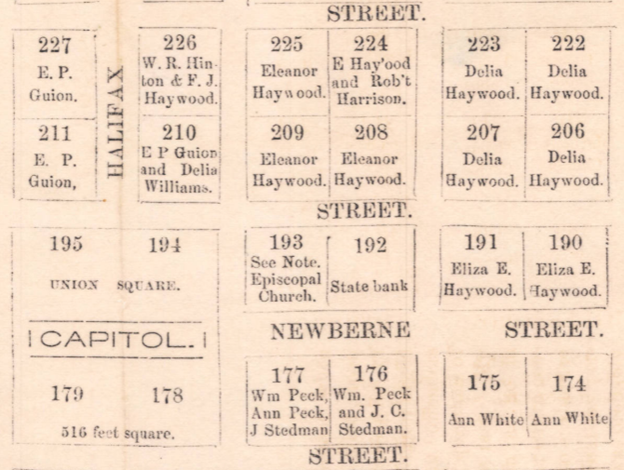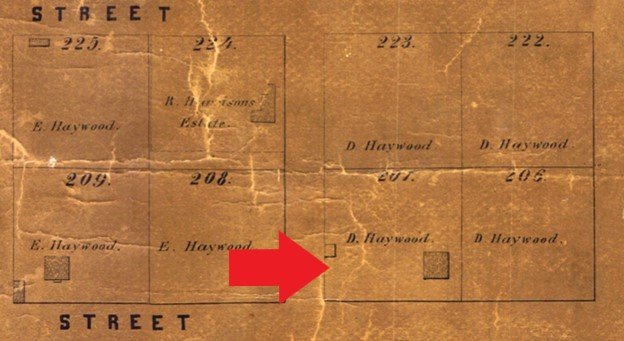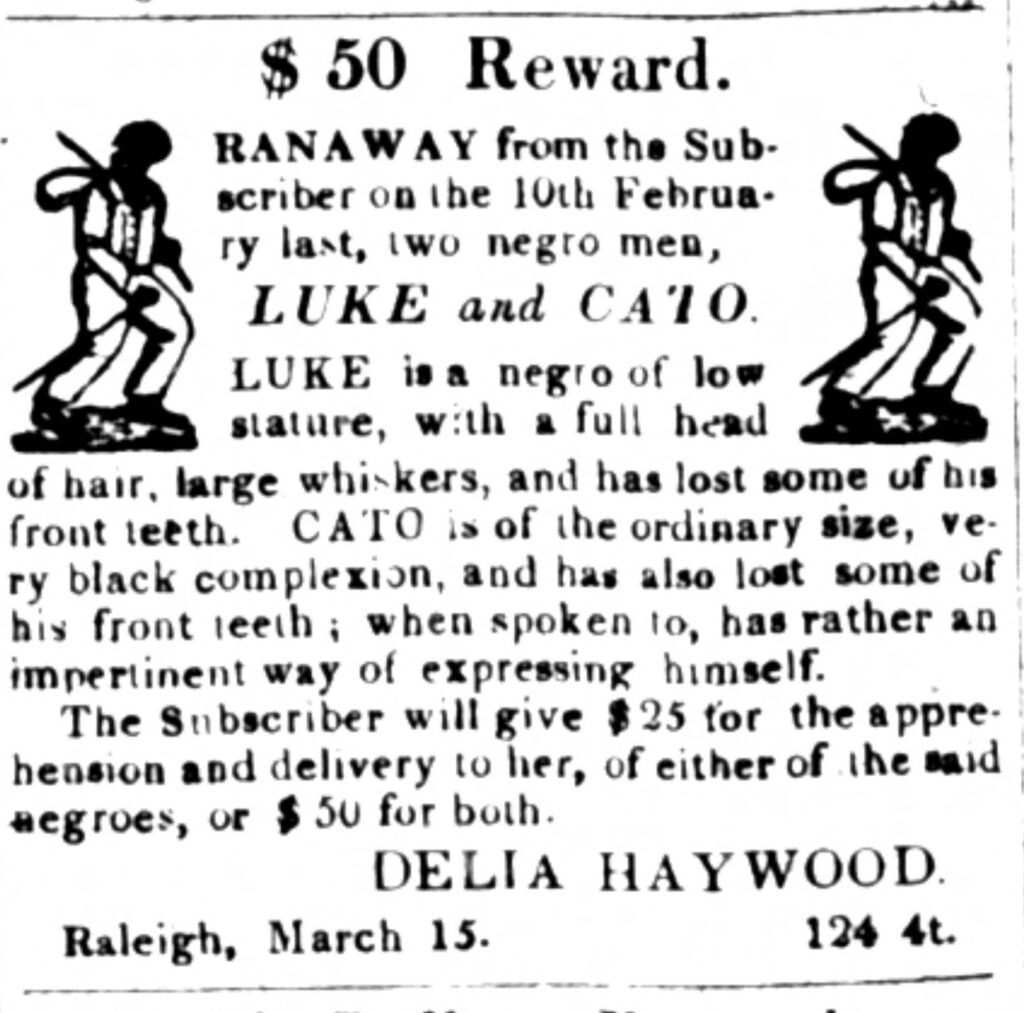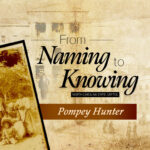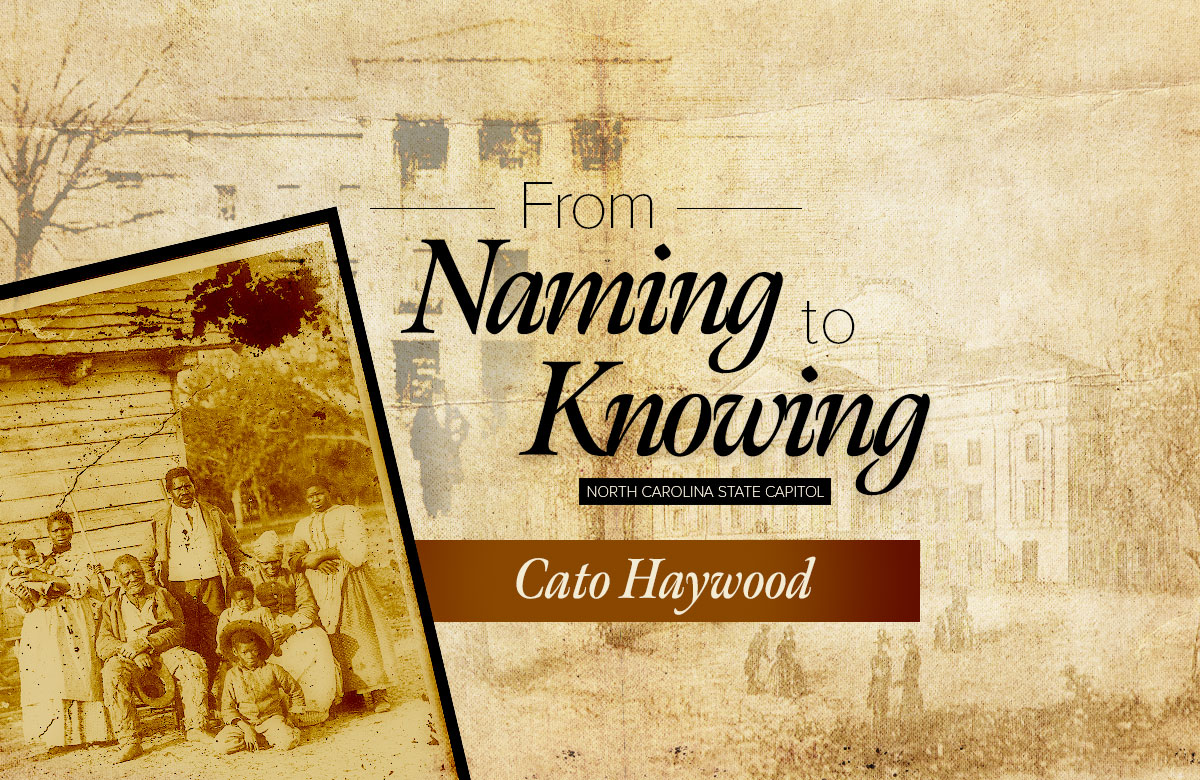
In the 1834 Report of the Commissioners appointed to superintend the re-building of the State Capitol, Cato Haywood was listed as a “laborer,” generating $.50 per day. Cato did not keep that money. Most enslaved people were not able to retain the money their labor generated.
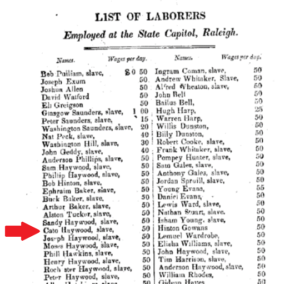
Cato’s enslaver Delia Haywood was likely paid for his work (For more on the topic of women enslavers). A map from 1834 shows that Delia Haywood owned a square block south of Burke Square, just a few blocks from the Capitol. She maintained this property until at least 1847, with a brick house facing Edenton Street. It is probable that Cato also lived on this property and walked to work at the Capitol.
Delia Haywood was the daughter of Colonel Philemon Hawkins, a Revolutionary War soldier. She was the widow and second wife of Stephen Haywood, a member of the prominent local Haywood family. When Stephen Haywood died, Delia inherited at least ten enslaved people from his estate, including Cato. A Division of Estate record from 1826 shows enslaved people being transferred to Delia. Delia selects the following people: “Jim Sr., Peter, Moses, Allen, Cato, Mark, Davy, Sam, John, Joseph.” John, Joseph, Moses, Peter, and potentially Sam listed here were also hired out to work on the Capitol’s construction.
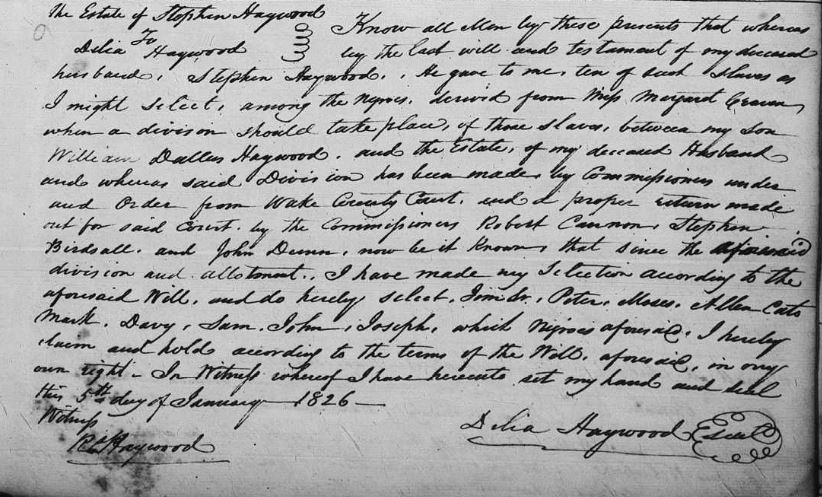
In 1830, Delia was listed in the US census living in Raleigh as the enslaver of 18 people. She also enslaved six people elsewhere in Wake County.
In 1837, Cato sought his freedom. On March 15th, 1837, Delia Haywood placed a runaway slave ad for “LUKE and CATO.” In the ad, Delia described Cato as “of the ordinary size, very black complexion, and has also lost some of his front teeth.” We can only guess what Cato’s experience was as an enslaved person or why he chose to seek freedom. Delia also noted in the ad that she felt Cato “when spoken to, has rather an impertinent way of expressing himself.” Cato might have been resisting slavery by not showing deference to Delia or otherwise challenging the strict social norms he was expected to follow as an enslaved person. (For more on the topic of resistance to slavery) From this record, we do not know what happened to Cato, if he was caught and returned to Delia, or if he was able to take his freedom. Delia died in 1852 and her estate papers listed several enslaved people – including Charles, Miles, Becky, Sampson, Sam, Sally, Henry, Mary, Sarah, Amy, Jordan, Phil, Lotty, William, Lucy, John, and Tom – but no Cato.
References:
- “$50 reward,” Raleigh, NC, 1837. North Carolina Runaway Slave Advertisements Digital Collection.
- Census Of The United States, 1830-50, Record Group: Records of the Bureau of the Census, The National Archive, Washington, D.C.
- Map of the City of Raleigh. Surveyed and drawn by J.W. Johnson, 1847. Accessed in the Raleigh History Collection, State Archives of North Carolina.
- Plan of the city of Raleigh first published in the year 1834. Map printed by Walters, Hughes and Company, Raleigh, N.C. From the book, Early Times in Raleigh Addresses Delivered by the Hon. David L. Swain, 1867. Accessed in the Raleigh History Collection, State Archives of North Carolina.
- Report of the commissioners appointed to superintend the re-building of the State Capitol. Philo White, Printer to the State, Legislature of North Carolina, 1834. Accessed in the Raleigh History Collection, State Archives of North Carolina.
- Wake County Register’s Book, Volume 7. Wake County (North Carolina) Register of Deeds. Raleigh, NC.
